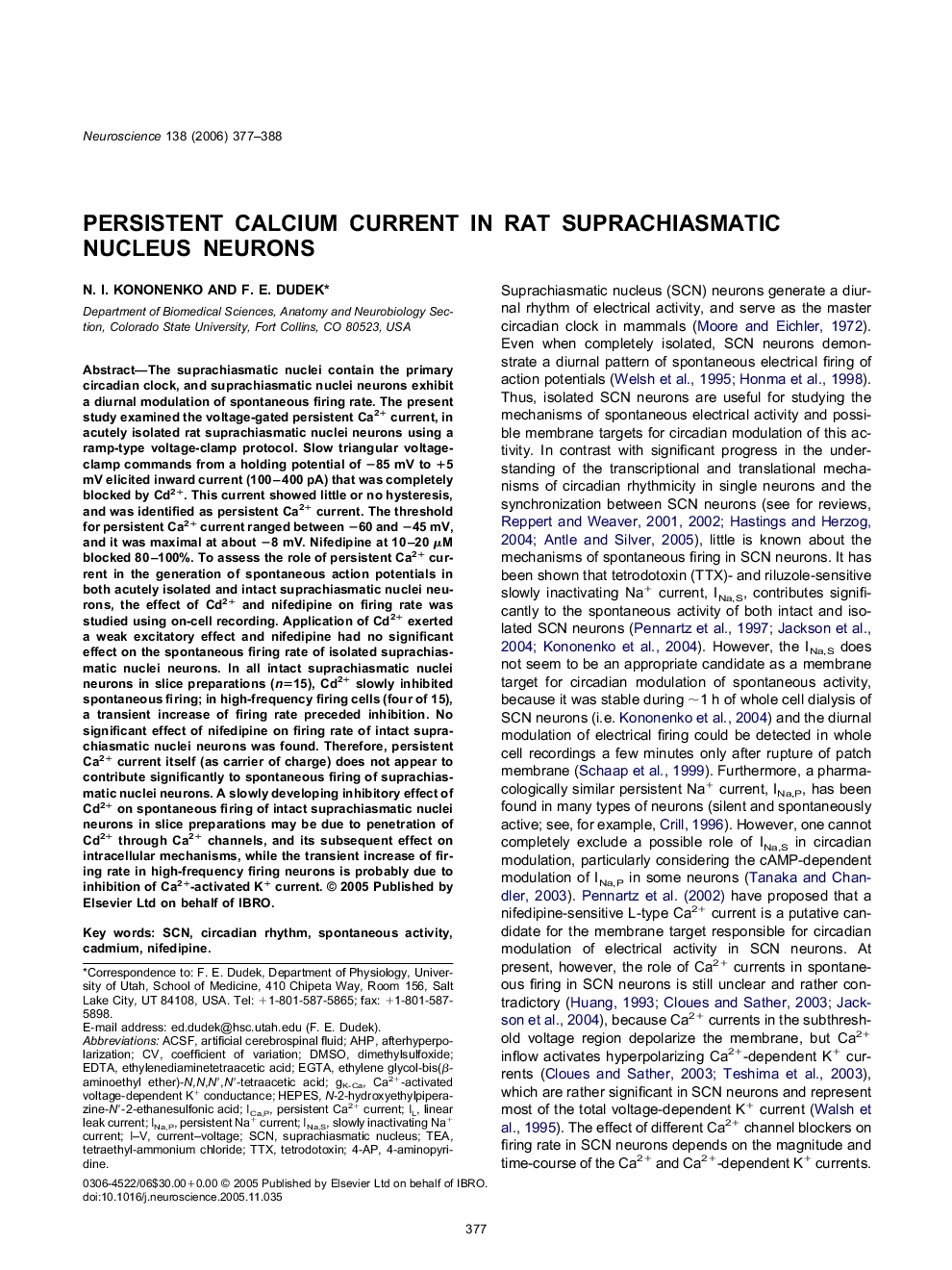| Article ID | Journal | Published Year | Pages | File Type |
|---|---|---|---|---|
| 4342486 | Neuroscience | 2006 | 12 Pages |
The suprachiasmatic nuclei contain the primary circadian clock, and suprachiasmatic nuclei neurons exhibit a diurnal modulation of spontaneous firing rate. The present study examined the voltage-gated persistent Ca2+ current, in acutely isolated rat suprachiasmatic nuclei neurons using a ramp-type voltage-clamp protocol. Slow triangular voltage-clamp commands from a holding potential of −85 mV to +5 mV elicited inward current (100–400 pA) that was completely blocked by Cd2+. This current showed little or no hysteresis, and was identified as persistent Ca2+ current. The threshold for persistent Ca2+ current ranged between −60 and −45 mV, and it was maximal at about −8 mV. Nifedipine at 10–20 μM blocked 80–100%. To assess the role of persistent Ca2+ current in the generation of spontaneous action potentials in both acutely isolated and intact suprachiasmatic nuclei neurons, the effect of Cd2+ and nifedipine on firing rate was studied using on-cell recording. Application of Cd2+ exerted a weak excitatory effect and nifedipine had no significant effect on the spontaneous firing rate of isolated suprachiasmatic nuclei neurons. In all intact suprachiasmatic nuclei neurons in slice preparations (n=15), Cd2+ slowly inhibited spontaneous firing; in high-frequency firing cells (four of 15), a transient increase of firing rate preceded inhibition. No significant effect of nifedipine on firing rate of intact suprachiasmatic nuclei neurons was found. Therefore, persistent Ca2+ current itself (as carrier of charge) does not appear to contribute significantly to spontaneous firing of suprachiasmatic nuclei neurons. A slowly developing inhibitory effect of Cd2+ on spontaneous firing of intact suprachiasmatic nuclei neurons in slice preparations may be due to penetration of Cd2+ through Ca2+ channels, and its subsequent effect on intracellular mechanisms, while the transient increase of firing rate in high-frequency firing neurons is probably due to inhibition of Ca2+-activated K+ current.
